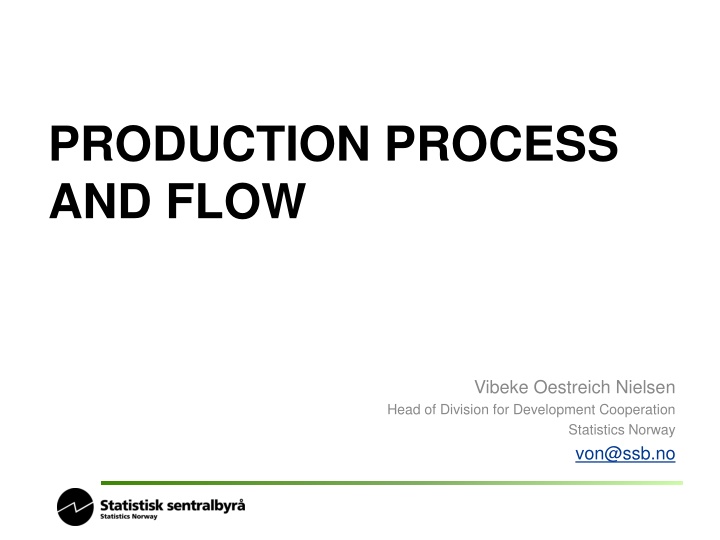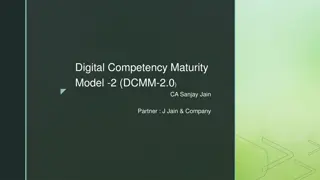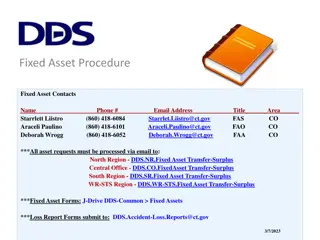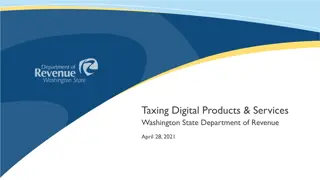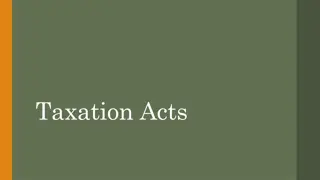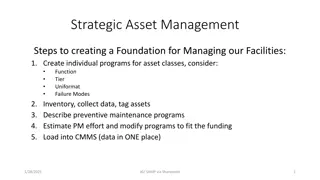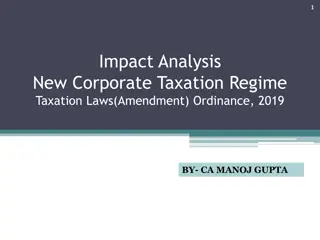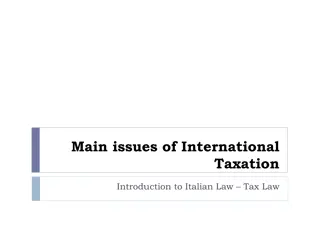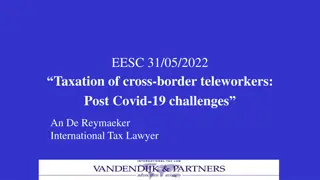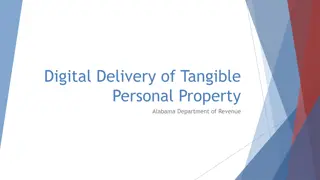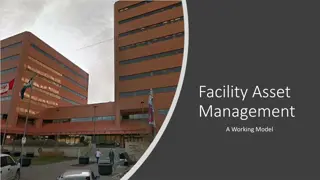Emerging Trends in Digital Asset Taxation
the legal framework and current trends in the taxation of digital assets, including definitions, business models, and the challenges of international taxation and sourcing in the digital economy. The discussion delves into the impact of FinTech and the shift from physical to digital services, presenting insights on the taxation of emerging digital business models.
Download Presentation

Please find below an Image/Link to download the presentation.
The content on the website is provided AS IS for your information and personal use only. It may not be sold, licensed, or shared on other websites without obtaining consent from the author.If you encounter any issues during the download, it is possible that the publisher has removed the file from their server.
You are allowed to download the files provided on this website for personal or commercial use, subject to the condition that they are used lawfully. All files are the property of their respective owners.
The content on the website is provided AS IS for your information and personal use only. It may not be sold, licensed, or shared on other websites without obtaining consent from the author.
E N D
Presentation Transcript
PRODUCTION PROCESS AND FLOW Vibeke Oestreich Nielsen Head of Division for Development Cooperation Statistics Norway von@ssb.no
CRVS system Live births Complementary/ Interim sources Health services Deaths Certification of cause of death Civil Registration, including population registers Fetal deaths Population census Surveys Sample registration areas Vital Statistics Authorized institutions Marriages Compilation Processing Validation Quality control Dissemination Principles: Divorces Additional administrative sources 1.Compulsory 2.Universal 3.Continuous 4.Confidentiality Annulments Judicial separations Courts Coronary Police Registries Health records Judicial institutions Adoptions Legitimation National IDs Electoral lists Passports Recognition
Goals of a Statistical Processing Plan 1. Collection of information needed by major data users 2. Determine user priorities on tabulations and attempt to satisfy those deemed most important 3. Prepare a long-range program for the conduct of the statistical processing programme ; usually made a few years in advance; three- or four-year
National centralized compilation from individual statistical reports Uniform for the country Common definitions, classifications, coding, querying, data entry and editing procedures Predetermined tabulations plans Flexible and adaptable to meet national and international requirements Compilation from individual reports, either paper- based or electronic, be undertaken centrally If decentralized, detailed written guidelines, dealing with such procedures as coding, editing, querying and data entry, must be issued by the central national authority
Steps involved in processing Control of receipt of statistical reports Converting data into an electronically readable form Publish statistics Coding of data Produce statistics Imputation of missing or inconsistent data items Querying Editing
Steps involved in processing Reporting schedule (manual and electronic systems) control the receipt of reports diligently addressing issues of promptness and completeness of reporting ascertain whether or not reports are received on time, as well as whether returns are received from every geographical reporting area control method must reveal whether the reporting frequencies are consistent with those of the preceding period Control of receipt of statistical reports
Steps involved in processing essential to establish codes to be used in situations where the answer is unknown or not stated . ding of data Punching, scanning or similar methods can be used if data are received on paper may be possible to carry out some of the editing, coding and imputation of missing or inconsistent data as an automated process concurrent with the data-capture function Converting data into an electronically readable form
Steps involved in processing translation of items of information into numerical values to facilitate data processing age or birth weight, are reported as numerical values and need no translation unit of measurement ie hours, days, months or years in the case of age or kilograms, grams, in the case of weight, should be coded in addition to the numerical value. establish codes to be used in situations where the answer is unknown or not stated . Coding of data
Coverage and completeness Covered? Yes/no Rate of registration? 30 %? 65 %? Complete?
Steps involved in processing missing, inconsistent or inappropriate responses should be questioned or queried by referring the item to the data-collection agency for clarification contact the local or regional office and request that it contact the appropriate source corrected data must be transmitted to the central office (or, in the case of decentralization, to the subnational office), either manually or electronically Querying
Steps involved in processing electronic checking visual checking for completeness and accuracy and errors have been minimized missing, inconsistent or obscure should be detected and corrections should be made.
Steps involved in processing assigning a probable value to an item whose true value is unknown Imputation of missing or inconsistent data items aid of last resort in the attempt to supply missing or obviously incorrect data be employed only if the querying process described above has failed to produce the information sought
Basic Record Flow Source: US Center for Disease Control and Prevention
Vital statistics template: Chapter 2.3 The description of the organizational structure should cover the two following issues: How the CRVS system is organized between agencies at the central level, who has which responsibilities, and the data flow between the different agencies How the different agencies are organized internally, the data flow between the different units and administrative levels, and their responsibilities.
Figure B4.1 Possible organizational chart presenting different levels and cooperation partners
Exercise Flowchart of VS Production Process Produce a flow chart for your country What are the weaknesses or issues on the process? How can the process be improved? 20 minutes
